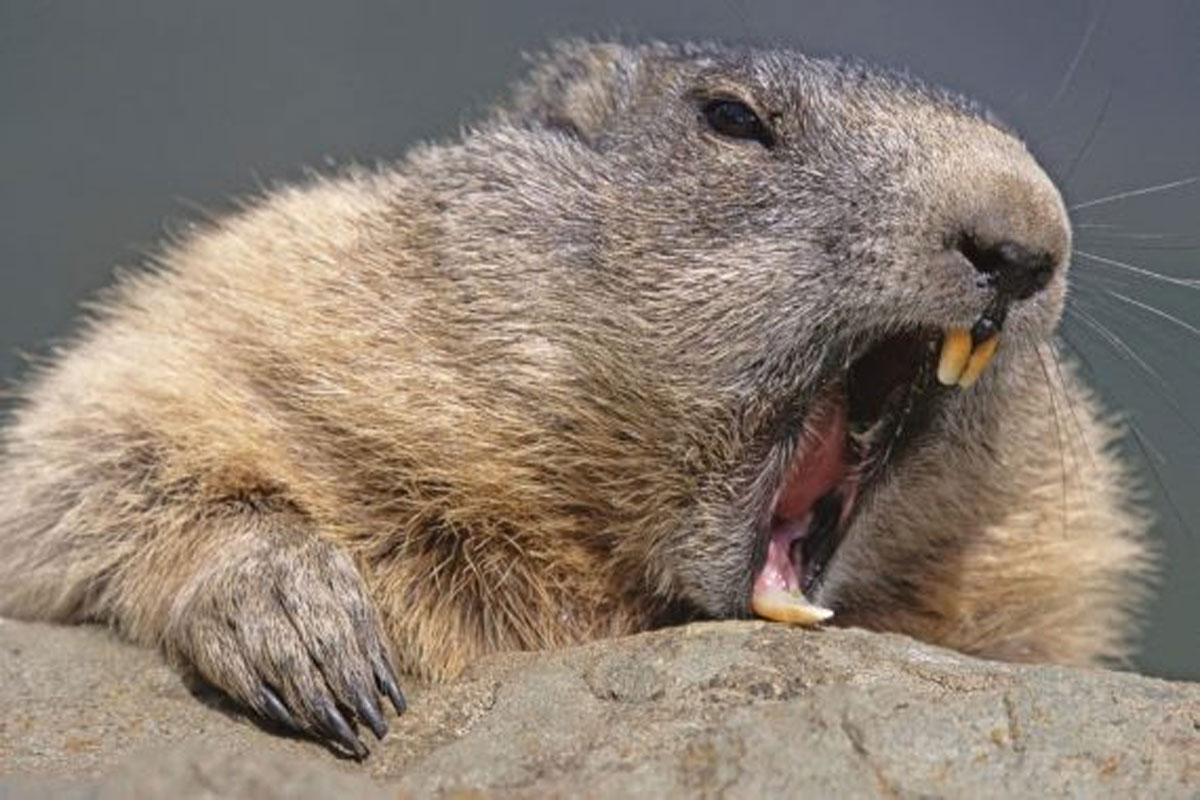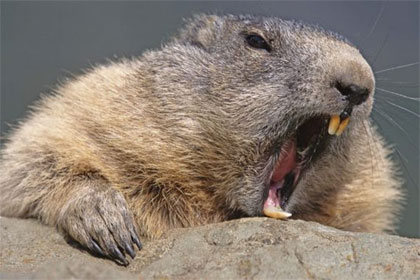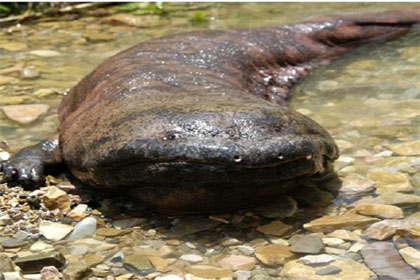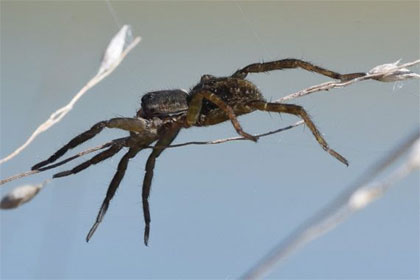
When Regular Animals Grow to Massive Sizes
Nick Redfern June 30, 2021
As you can guess from the title of today’s article, we’re not talking about literal monsters. Rather, creatures of monstrous proportions that shouldn’t be. With that said, let’s begin. John Warms, who has extensively studied reports of monstrous beasts in Manitoba, Canada, has uncovered tales of giant, marauding beavers in not just Manitoba but also in areas stretching from Alaska to Florida. The term “giant” is not an exaggeration, as we’re talking about beavers the size of people and even larger! As incredible as it may sound, such beasts really did once exist. Warms says: “Today we know from recovered bones that the giant beaver is in a separate classification from the one we know so well as Castor canadensis. It has been named Castoroides ohioensis after the state where its remains were first documented.” Warms also notes that he has a number of reports on-file of “bear-sized beavers,” as well as sightings of huge beaver lodges, ones that come close to the size of an average house. It’s hardly surprising that their lodges would be so huge. After all, not much else would be suitable for creatures that reached heights of seven feet and weights of in excess of 250 pounds. Although the giant beaver is believed to have become extinct around 10,000 years ago – the same timeframe in which the Mammoth and the Mastodon became no more – that may actually be the case.” Now, onto another oversized creature.
 Salamanders are amphibians that are noted for their long tails, blunt heads, and short limbs and which – in the case of the Chinese giant salamander – can reach lengths of six feet. But, is it possible that some salamanders could grow much larger, even to the extent of fifteen to twenty-five feet? Incredible? Yes. Implausible? Maybe not. Steve Plambeck is a noted authority on the giant salamander theory when it comes to the matter of the Loch Ness Monster. He says: “Nessie is a bottom dwelling, water breathing animal that spends very little time on the surface or in mid-water, although just enough to be spotted visually or by sonar on very rare occasions. Its forays up from the depths are most likely made along the sides of the Loch, to feed on the fish which are predominantly found along the sides, in shallower water above the underwater cliffs that precipitously drop off into the 750 foot abyss. Such behavior is only consistent with a fish, or aquatic amphibian, which can extract all of its needed oxygen directly from the water.
Salamanders are amphibians that are noted for their long tails, blunt heads, and short limbs and which – in the case of the Chinese giant salamander – can reach lengths of six feet. But, is it possible that some salamanders could grow much larger, even to the extent of fifteen to twenty-five feet? Incredible? Yes. Implausible? Maybe not. Steve Plambeck is a noted authority on the giant salamander theory when it comes to the matter of the Loch Ness Monster. He says: “Nessie is a bottom dwelling, water breathing animal that spends very little time on the surface or in mid-water, although just enough to be spotted visually or by sonar on very rare occasions. Its forays up from the depths are most likely made along the sides of the Loch, to feed on the fish which are predominantly found along the sides, in shallower water above the underwater cliffs that precipitously drop off into the 750 foot abyss. Such behavior is only consistent with a fish, or aquatic amphibian, which can extract all of its needed oxygen directly from the water.
 “Yet as seldom as it happens, and for reasons known only to the animal itself, Nessie also leaves the water for apparently brief stretches, as observed most famously in the Spicer and Grant sightings of 1933 and 1934 respectively. It may be said that this is nothing new: it’s a centuries old tradition among the Highlanders that the kelpie or water horse of Loch Ness comes ashore. That’s a key behavioral trait to take into account if we are distinguishing fish from amphibians.” In that sense, Plambeck makes a persuasive argument when it comes to the matter of the creatures of Loch Ness possibly being huge salamanders, or, at the very least, another kind of large, unknown amphibian.
“Yet as seldom as it happens, and for reasons known only to the animal itself, Nessie also leaves the water for apparently brief stretches, as observed most famously in the Spicer and Grant sightings of 1933 and 1934 respectively. It may be said that this is nothing new: it’s a centuries old tradition among the Highlanders that the kelpie or water horse of Loch Ness comes ashore. That’s a key behavioral trait to take into account if we are distinguishing fish from amphibians.” In that sense, Plambeck makes a persuasive argument when it comes to the matter of the creatures of Loch Ness possibly being huge salamanders, or, at the very least, another kind of large, unknown amphibian.
In 2001, English cryptozoologist Dr. Karl Shuker heard a fascinating story from explorer Bill Gibbons of a giant spider. The story dates back to 1938 and the experiences of a pair of explorers, Reginald and Margurite Lloyd. While negotiating a jungle pathway in the heart of the Belgian Congo, they saw something very strange step out in front of them. Their first thoughts were: was it a small crouching person, or a similarly crouched monkey? To their eternal horror, it quickly became clear it was neither. What it actually was, was a gigantic spider, one that had legs which spanned four-feet! Reginald Lloyd, realizing the enormity of the situation – never mind the enormity of the creature – quickly reached for his camera. Unfortunately, the beast raced across the track and vanished into the undergrowth before he could capture what would, most assuredly, have been a priceless picture. The pair was in doubt about what they had encountered, however: a truly giant, eight-limb monstrosity.
 A wealth of such stories comes from the Bokaonde and Kaonde tribes of Zambia. It’s largely thanks to an early 20th century explorer, Frank H. Melland, that we know of the accounts of what can only be called immense and fearsome fliers. Melland’s sources in the tribes told him that the most feared of all the monsters of the skies was the Kongamato. Its name means “over-whelmer [sic] of boats.” The name is a very apt one, since it had the habit of swooping down on canoes and savagely attacking and killing those within. It was a huge beast that lived in, and hunted in, the Jiundu swamps, and which deeply terrified the people of the area. As for the appearance of the Kongamato, it looked somewhat like a bird – at first glance. That it utterly lacked feathers, however, and the fact that its red body was leathery-looking, was membranous, and had wings far more befitting those of a bat, suggests it was something else entirely. Moreover, its immense mouth was filled with sharp teeth that could slice a man in two in an instant, which is not something typical of the average bird. A huge, deadly bat? Don’t bet against it! Mysterious Universe
A wealth of such stories comes from the Bokaonde and Kaonde tribes of Zambia. It’s largely thanks to an early 20th century explorer, Frank H. Melland, that we know of the accounts of what can only be called immense and fearsome fliers. Melland’s sources in the tribes told him that the most feared of all the monsters of the skies was the Kongamato. Its name means “over-whelmer [sic] of boats.” The name is a very apt one, since it had the habit of swooping down on canoes and savagely attacking and killing those within. It was a huge beast that lived in, and hunted in, the Jiundu swamps, and which deeply terrified the people of the area. As for the appearance of the Kongamato, it looked somewhat like a bird – at first glance. That it utterly lacked feathers, however, and the fact that its red body was leathery-looking, was membranous, and had wings far more befitting those of a bat, suggests it was something else entirely. Moreover, its immense mouth was filled with sharp teeth that could slice a man in two in an instant, which is not something typical of the average bird. A huge, deadly bat? Don’t bet against it! Mysterious Universe
 Mysterious Universe
Mysterious Universe














